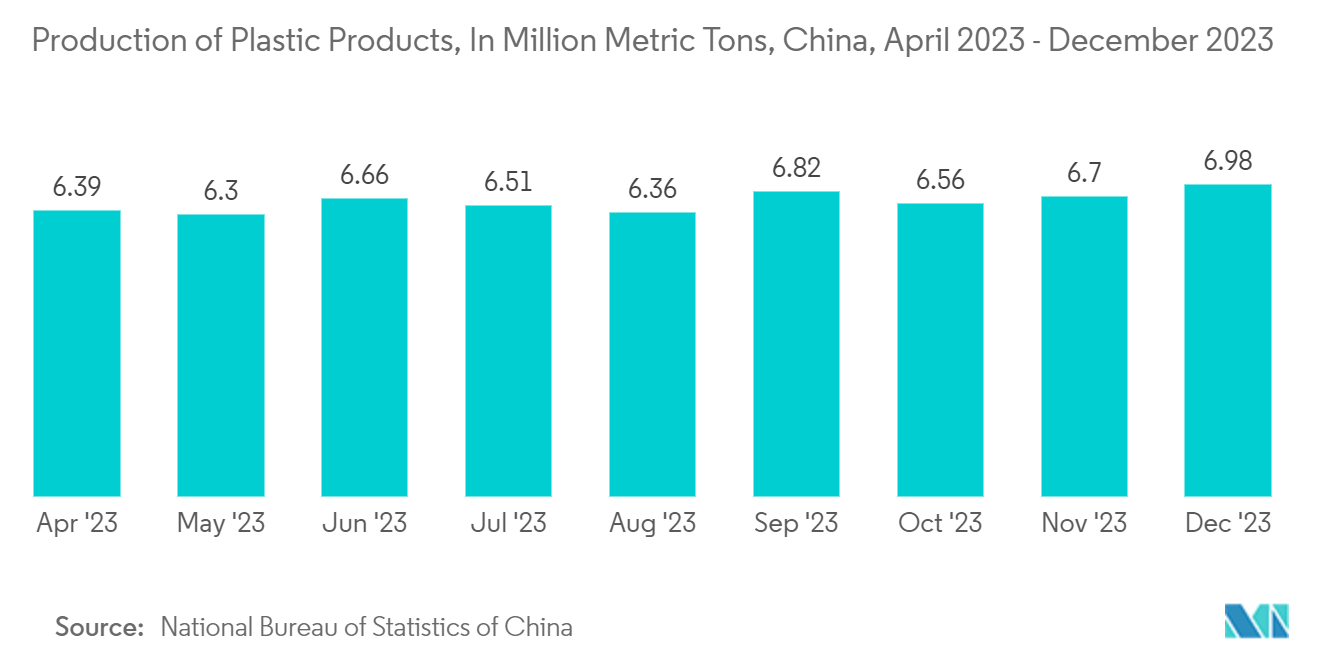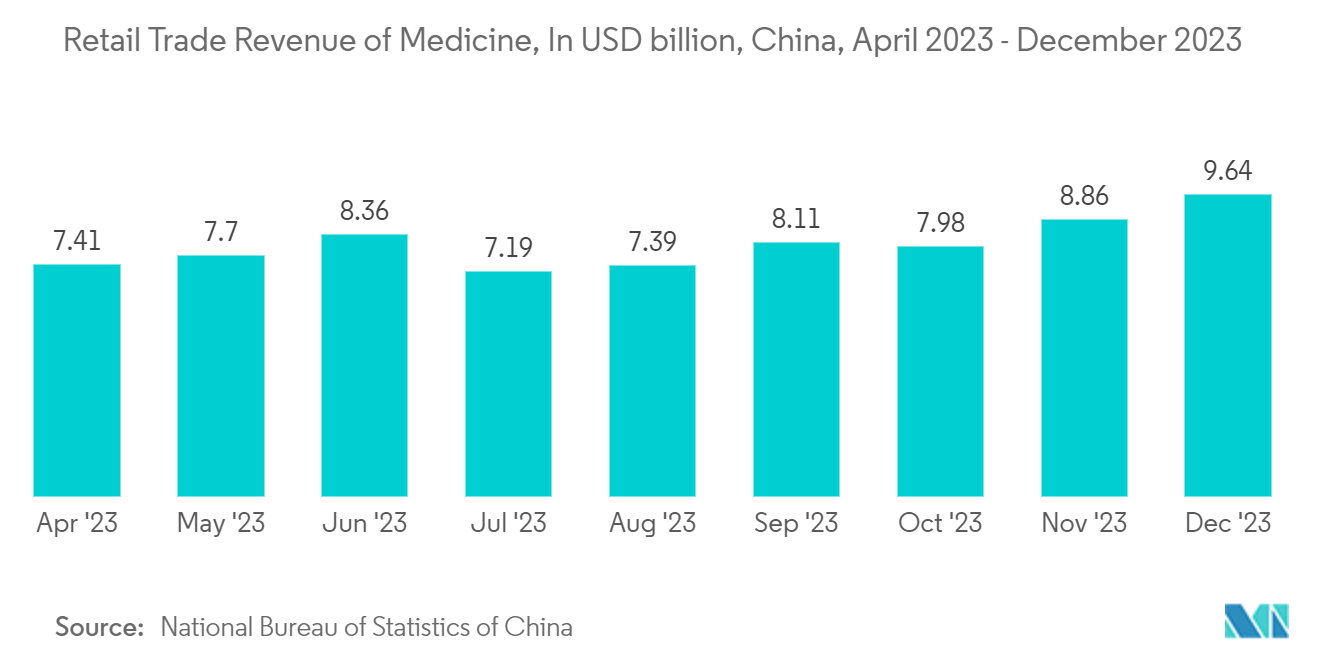Market Trends of Asia-Pacific Pharmaceutical Plastic Bottles Industry
Polyethylene Terephthalate (PET) is Expected to Witness Significant Growth
- Manufacturers prefer PET plastic bottles because they require the least amount of raw material to be processed in the manufacturing process compared to other plastics. Due to its versatility in color and design, PET plastic bottles have become a popular choice among industry players. PET plastic bottles also offer the highest safety and quality, so they are increasingly used in the pharmaceutical industry.
- In addition, PET can reduce the product's weight by up to 90% compared to glass, resulting in a more cost-effective transportation process. PET plastic bottles are replacing the bulky and fragile glass bottles used in the pharmaceutical sector in Asia-Pacific. For instance, as indicated by the PACE and the NCL, it is feasible to transport 30,000 100-ml PET bottles in a single truck, compared to only 18,000 glass bottles. This significantly reduces transportation costs and environmental impact.
- According to the National Bureau of Statistics of China, as of December 2023, China produced roughly 6.98 million metric tons of plastic products every month, compared to 6.39 million metric tons in April 2023.
- The growing availability of plastic products can support the expansion of the pharmaceutical industry in Asia-Pacific. As pharmaceutical companies look to expand their operations and enter new markets, ensuring a stable and ample supply of packaging materials is crucial. This can help pharmaceutical companies meet increasing demand and explore new growth opportunities.

China to Account for Significant Market Growth
- Pharmaceutical plastic bottle businesses in China are expected to have many business opportunities due to the country's robust pharmaceutical sector growth. Additionally, the Chinese government's initiatives to quicken the nation's healthcare system reform are anticipated to encourage the growth of the pharmaceutical plastic bottle business.
- For instance, by the plan for creating the Chinese Pharmacopoeia 2025 Edition, the Chinese Pharmacopoeia Commission published the drafts of 46 pharmaceutical packaging standards in June 2022.
- The aging population, the increasing prevalence of chronic diseases associated with lifestyle choices, the growing public awareness of packaged healthcare benefits, and the growing demand for plastic packaging within the healthcare and pharmaceutical industries are the key drivers of the Chinese plastic pharmaceutical packaging market growth.
- According to the China Center for Disease Control and Prevention (CCDC), 76.35% of China’s population aged 60 or over had at least one chronic disease, while 37.2% had multiple chronic diseases. These factors will drive domestic pharmaceutical production, thus increasing the need for innovative plastic packaging solutions.
- The development of independent research and development teams by China's pharmaceutical plastic bottle companies is encouraged to investigate cutting-edge, environmentally friendly, secure, helpful, and sustainable packaging materials and products. The market value has increased due to the growing innovation, collaboration, acquisition, and production in the drug manufacturing industry.
- According to the National Bureau of Statistics of China, retail trade medicine revenue in China was USD 9.64 billion in December 2023, compared to USD 7.41 billion in April 2023. With the growth in retail trade medicine revenue, pharmaceutical companies may introduce new products or expand their existing product lines.
- Also, this could include medications in various forms and dosages, which would require a range of packaging options, including plastic bottles. The need for diverse packaging solutions can contribute to the growth of the plastic bottles market.


